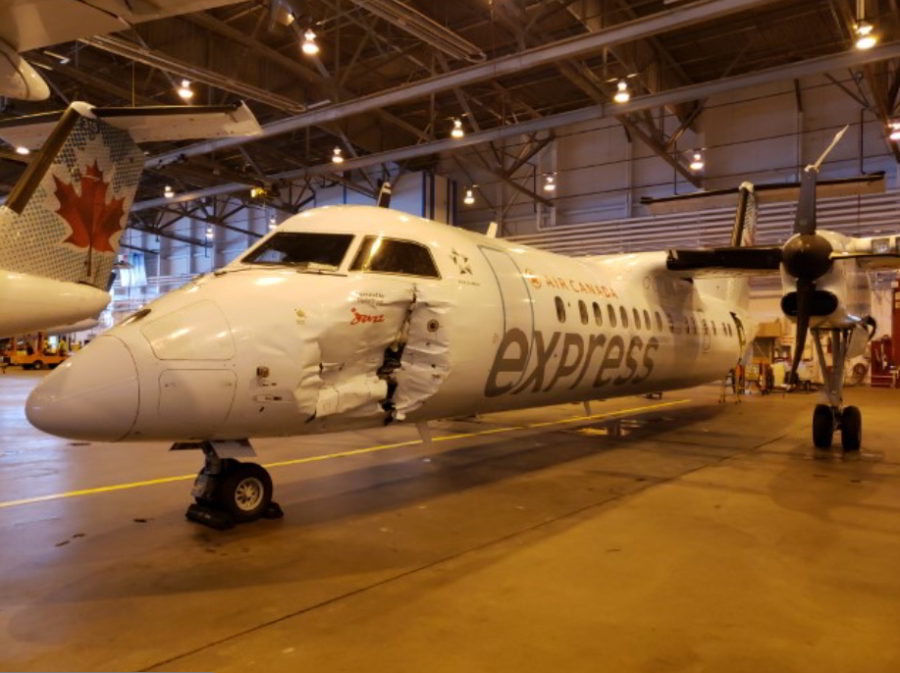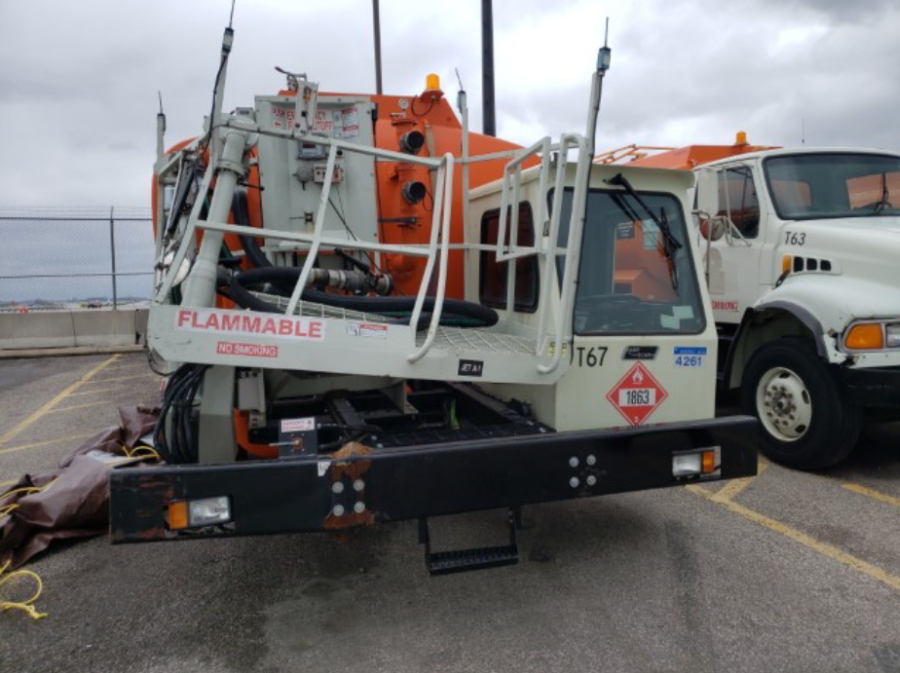Ground collision and evacuation
Jazz Aviation LP
DHC-8-311, C-FJXZ
and
Menzies Aviation
Rampstar Fuel Tanker
Toronto/Lester B. Pearson International Airport, Ontario
The occurrence
On , at 0133 Eastern Daylight Time, during the hours of darkness, a de Havilland DHC-8-311 aircraft (registration C-FJXZ, serial number 264), operated by Jazz Aviation LP as flight JZA8615, and a Rampstar fuel tanker, operated by Menzies Aviation, collided on the apron at the Toronto/Lester B. Pearson International Airport, Ontario. The aircraft was carrying 52 passengers, 3 of whom were infants. In addition, there were 3 crew members and 1 person occupying the flight deck observer seat. The passengers and crew evacuated the aircraft and were guided to the terminal building by the first responders, who included airport officials and aircraft rescue and fire-fighting service personnel. There was no fire and no fuel spillage. The emergency locator transmitter did not activate following the collision. There were 15 minor injuries reported, including 1 infant and 1 crew member.
Media materials
News release
Aircraft/fuel truck collision highlights importance of following safety directives during emergencies
Read the news release
Deployment notice
TSB deploys a team of investigators following an accident at Toronto/Lester B. Pearson International Airport, Ontario
The Transportation Safety Board of Canada (TSB) is deploying a team of investigators to Toronto/Lester B. Pearson International Airport, Ontario, where a DHC-8-300 aircraft, operated by Jazz (flight 8615), was taxiing to a gate when it was struck by a fuel tanker. The TSB will gather information and assess the occurrence.
Investigation information
Download high-resolution photos from the TSB Flickr page.
Class of investigation
This is a class 3 investigation. These investigations analyze a small number of safety issues, and may result in recommendations. Class 3 investigations are generally completed within 450 days. For more information, see the Policy on Occurrence Classification.
TSB investigation process
There are 3 phases to a TSB investigation
- Field phase: a team of investigators examines the occurrence site and wreckage, interviews witnesses and collects pertinent information.
- Examination and analysis phase: the TSB reviews pertinent records, tests components of the wreckage in the lab, determines the sequence of events and identifies safety deficiencies. When safety deficiencies are suspected or confirmed, the TSB advises the appropriate authority without waiting until publication of the final report.
- Report phase: a confidential draft report is approved by the Board and sent to persons and corporations who are directly concerned by the report. They then have the opportunity to dispute or correct information they believe to be incorrect. The Board considers all representations before approving the final report, which is subsequently released to the public.
For more information, see our Investigation process page.
The TSB is an independent agency that investigates air, marine, pipeline, and rail transportation occurrences. Its sole aim is the advancement of transportation safety. It is not the function of the Board to assign fault or determine civil or criminal liability.

